This page provides a brief orientation to the range of content on templemountains.org with examples of each type of resource and links to their treatment on the website. They were developed for students, teachers, more-than-casual tourists, and the general public who seek a deeper understanding of Khmer architecture than found on travel websites or Wikipedia, yet without the degree of specificity of a scholarly monograph. The website has been designed as a “resource-bank” offering its users a choice of tools with which to pursue their own investigation of Angkorian and related "temple mountains."
Templemountains.org consists of three, broad resource areas subdivided into more than seventy stand-alone learning modules, each directly accessible from the Table of Contents at right. The website's text is color-coded throughout so users can select the technical detail with which they investigate a topic. All the site’s content is available on a "open-source basis," without permission or attribution, free of charge, advertisement and solicitations.
1
The website's opening section presents fifteen perspectives or “frames” through which to look more closely at “temple mountains,” each illustrated by photographs and diagrams analyzing a specific Khmer monument. They include concise introductions to such diverse themes as “The Central Role of Asymmetry in Khmer Architecture,” “The Paradox of Monuments to an Apophatic (Niskala) Absolute” and “The Applicability of Adam Hardy’s ’Aedicular Expansion’ to the Khmer Context.” The three site plans at right compare diagonal, radial and orthogonal, (axial and lateral,) projection as positioning the Bayon’s enigmatic “face towers.”
2
The core of the website is a catalog containing forty architectural guides to individual Khmer shrines, from Ak Yom (c.725) to Mangalartha (1295,) with photographic details, site plan and an analysis of its place in the evolution of the Khmer” temple mountain.” Appendices summarize supplementary background on topics such as Hindu and Buddhist cosmology, Vajrayana mandala visualization and a timeline comparing Khmer history and monuments with contemporary events beyond its cultural ambit. The photo at right, from the catalog's thirteen describing the temple at Phimai, Thailand, (c.1100) illustrates how it anticipates the classical style of Angkor Wat.
3
The website concludes with an open-ended survey of alternative “temple mountain” traditions from Champa, Java, the Deccan, Yucatan, Bagan and Attica. This expanding portfolio currently documents seventy-three sites with more than 650 fully-annotated photographs and charts. For example, these two, from the Kallesvara temple, Hire Hadagali, Karnataka, show the proliferation of shrine aedicules from its superstructure (vimana) onto its parapet (hara/prastara) down its wall zone (vedibandha/jangha/bhitta.)
4
The links below allow a more thorough exploration of templemountains.org; each leads to the full treatments of the examples given above with full-screen versions of their images.
AN OVERVIEW OF
3GB of Original Resources on Forty Khmer Temples and Related Sites World-Wide
To scan the Table of Content and its list of seventy,
learning modules click here.
To read the discussion of "The Bayon: An Architecture
'Without Form or Dimension?'" click here.
To follow the architectural guide to the temple at
Phimai, Thailand click here.
To view the portfolio of eighteen, annotated photos of the Kallesvara temple, Hire Hadagali click here.
For additional information on templemountains.org please write to info@templemountains.org.
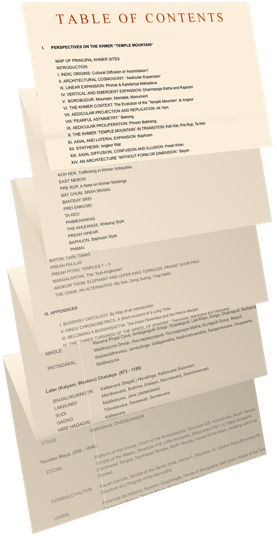
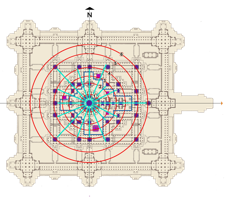
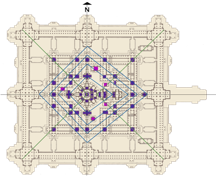
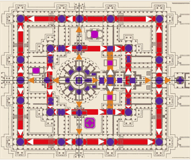
Bayon: Diagonal, Radial and Orthogonal Projections of the "Face Towers."

Phimai: Prasat from the northeast with analysis of rathas and sculpture
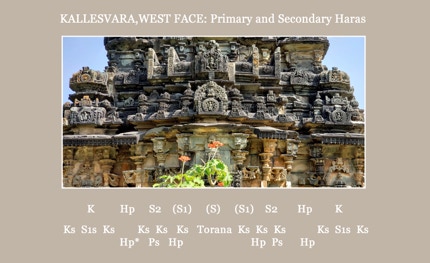
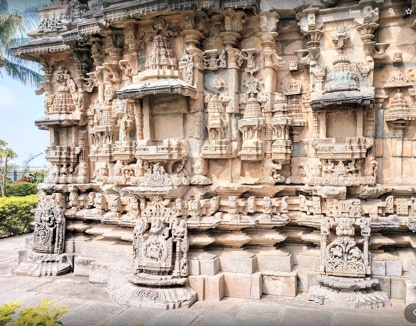
Kallesvara, Hire Hadagali: Double parapet and wall shrine aedicules
https:\\templemountain.org is a website of the Angkor and Beyond Resource Project which bears sole responsibility for its content. It is made available to all users on an "open source basis.”